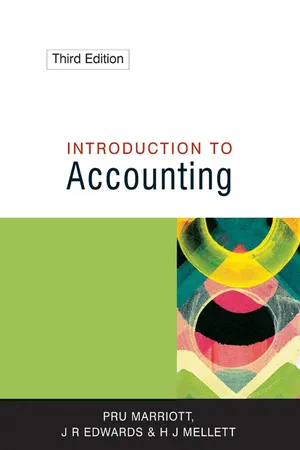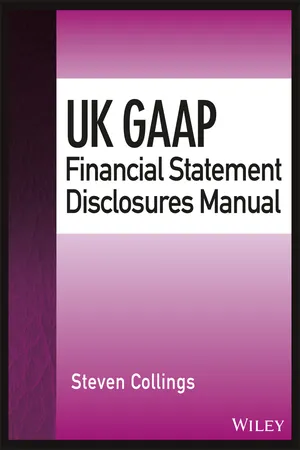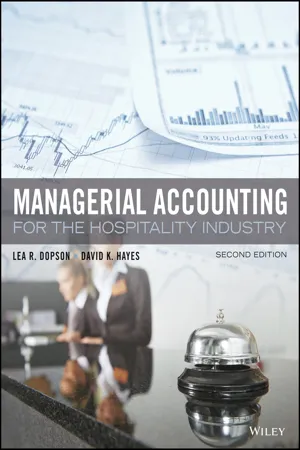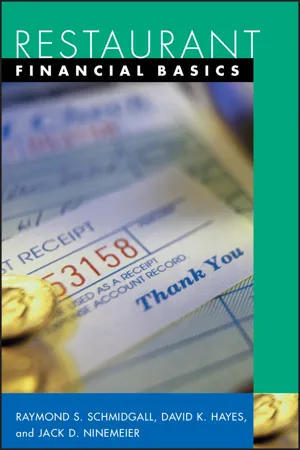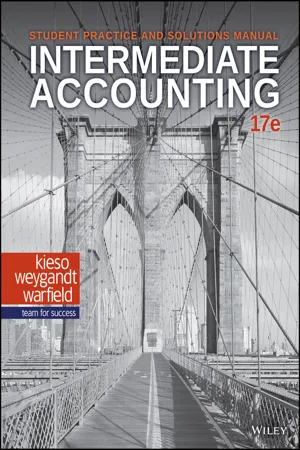Economics
Bank Balance Sheet
A bank balance sheet is a financial statement that provides a snapshot of a bank's assets, liabilities, and equity at a specific point in time. It shows the bank's financial position and helps assess its solvency and liquidity. Assets include loans and investments, while liabilities consist of deposits and borrowings. Equity represents the bank's net worth.
Written by Perlego with AI-assistance
Related key terms
1 of 5
12 Key excerpts on "Bank Balance Sheet"
- eBook - ePub
The Bank Credit Analysis Handbook
A Guide for Analysts, Bankers and Investors
- Jonathan Golin, Philippe Delhaise(Authors)
- 2013(Publication Date)
- Wiley(Publisher)
Chapter 5
Deconstructing a Bank’s Balance Sheet
[A ]typical bank’s balance sheet presents, on the face of it, an alarmingly precarious situation: its liabilities are mostly short term, but most of its assets are realizable only in the long term, and it is highly geared or “leveraged.” Depositors and other creditors must be persuaded that the whole pack of cards will not come crashing down at a moment’s notice.—Fitch IBCA1This book explores the creditworthiness of banks from several angles, many of them articulated around the balance sheet and, increasingly, around off-balance-sheet items. Bank financial statements are very complex. Readers may be familiar with general accounting rules, and this chapter will introduce them more specifically to the bank’s balance sheet—and its off-balance-sheet items. Inevitably, a number of concepts or definitions have to be discussed at this stage, while a more thorough analysis will be offered in later chapters, thereby introducing some degree of unavoidable duplication.The balance sheet, also known as the statement of condition or statement of resources records assets on one side and liabilities and equity on the other. The two sides must balance, hence the term. Some analysts, however, prefer to separate the liability side into equity—which for a bank is usually just a small fraction of the total—and actual liabilities toward third parties, as can be schematically seen in Exhibit 5.1 .EXHIBIT 5.1 The Balance SheetThe balance sheet merely captures a snapshot of the composition of a firm’s assets and the claims upon it at one moment in time—usually December 31 or the end of a quarter. Since it is a static picture, it does not say much about the company’s past performance or about its likely future. Hence, the balance sheet provides precious little information about the company’s ability to service debt on an ongoing basis. Of course, by comparing the firm’s balance sheets at various times, some inferences can be drawn about its debt servicing capacity - Michael Chibili(Author)
- 2019(Publication Date)
- Routledge(Publisher)
© Noordhoff Uitgevers bv 35 2.1 The components of a balance sheet 2.2 Formats of balance sheets 2.3 Establishing simple balance sheets 2.4 The Statement of Retained Earnings The balance sheet also at times called the statement of financial position is a list of all the assets owned by an organization, the debts owed by the organization and also the sum of all the investments brought into the organization by its owners. Despite the fact that the balance sheet is a result of the organization’s activities over time, it however is a representation of the worth and obligations of the organization at a very specific date. It is one of the most prominent financial statements of any organization. Section 2.1 introduces the various parts of the balance sheet. In Section 2.2 various formats used in establishing balance sheets will be discussed while Section 2.3 will illustrate the establishment of a simple balance sheet. The balance sheet 2 © Noordhoff Uitgevers bv 36 2 The balance sheet 2.1 The components of a balance sheet The balance sheet shows the balance between the assets of an organization with its liabilities and owners’ equity. This balance is symbolized in the fundamental accounting equation as follows: Assets = liabilities + owners’ equity For this fundamental equation to be respected at all times, an increase in an asset must be accompanied by a corresponding decrease in another asset or an increase in either a liability or owners’ equity. The balance sheet is the only one of the five major accounting statements that is established at a given point in time and that shows a balance between its two parts. The major sections of the balance sheet are as defined in the fundamental accounting equation and they define the structure of the subsections as follows: 2.1.1 Assets 2.1.2 Liabilities 2.1.3 Owners’ equity 2.1.1 Assets An asset is everything of value that is owned by a person or a company.- eBook - ePub
- David Worrell(Author)
- 2014(Publication Date)
- Praeger(Publisher)
still do not have a P&L. They have only shifted money around on the balance sheet—from value in the bank to the value invested in the software. They still have no customers or sales, no expenses, and no profits. When the company eventually has sales or expenses, those transactions will have an impact on the company’s balance sheet. We’ll examine that more in the next chapter.Summary
• A balance sheet is the first financial statement that exists when a business is created. It does not rely on any purchase or sale transactions. • The balance sheet has three sections: Assets, Liabilities, and Equity. Assets are what the company owns. Liabilities and Equity are what the business owes. • Liabilities are promises to pay. Equity is the value that is owed to the stockholders, or founders, of the business. • A balance sheet is naturally in balance. If a balance sheet is ever out of balance, it indicates an error in recording a transaction. • To be in balance, what the company owns should equal what it owes. That is, Assets = Liabilities + Equity. • A company starts with nothing—no value of its own—so everything that it owns (assets) comes either from the business owner (equity), or from borrowing (liabilities). • The balance sheet can capture and record the transfer of value between asset, liability, and equity accounts without creating any change to the P&L.Passage contains an image
6 How a P&L and a Balance Sheet Work Together
We’ve seen the P&L describe how money comes into and out of the business to generate profit: income is naturally offset by expenses, and the result is either a profit or loss. We said that the P&L describes “how” we make money. Because it shows money coming and going over a period of time, we can think of the P&L as a “movie” of the money flowing through the business.We also said that a balance sheet describes “how much” we have at any one point in time. Because a balance sheet does not describe money coming and going (but only what exists at a specific moment in time), accountants sometimes say it is a “snapshot.”Those are useful analogies, but the relationship between a P&L and the balance sheet is deeper than the relationship between a movie and a single frame or snapshot. The two documents interact in such a way that neither can tell the whole story without the other. Each contains only half of the complete picture. Let’s look at how the two documents work together, complement each other, overlap, and sometimes can even appear contradictory. - eBook - PDF
- Henry E. Riggs(Author)
- 2022(Publication Date)
- Springer(Publisher)
Its financial position will be different on the following date—perhaps not much different, but different nonetheless. Thus, the balance sheet is a Statement of Financial Position. The balance sheet can tell you nothing about the financial performance of the company. You cannot tell by looking at the balance sheet whether the corporation’s revenues (that is, sales) are large or small, growing or shrinking, nor whether the company is currently profitable or incurring losses. For information on those matters, you need to hold on until Chapter 2 where we discuss the income statement. But do not denigrate the usefulness of the balance sheet. It tells us more than simply the total value of the assets; it tells us the value of various types of assets. You are going to feel somewhat better about a corporation that has lots of cash than one that has almost no cash. You will want to evaluate the amounts owed by customers—Accounts Receivable (A/R). You recognize that these will probably be collected (turned into cash) relatively soon; on the other hand, if the accounts receivable balance is very high in relationship to the corporation’s rate of sales, this high balance may suggest that the corporation is having trouble collecting from its customers. You can go through an analogous line of reasoning in evaluating the corporation’s investment in Inventories. And on the other side of the equation, an evaluation of the composition of the liabilities can be revealing. How much is owed to vendors/suppliers (Accounts Payable, A/P)—an appropriate amount, given the volume of business the corporation is doing, or is there evidence that the corporation is having trouble meeting the payment terms of its suppliers? Liabilities represent a demand on cash, and thus the timing of when these liabilities must be discharged, and how, can be all important. - eBook - PDF
Financial Accounting Theory and Analysis
Text and Cases
- Richard G. Schroeder, Myrtle W. Clark, Jack M. Cathey(Authors)
- 2022(Publication Date)
- Wiley(Publisher)
This review reveals that no single measurement basis is used for all the elements; rather, a variety of measurement approaches are currently acceptable, depending on the circumstances and available information. Balance Sheet Elements Statement of Financial Accounting Concepts No. 8 Chapter 4 defines the elements of the balance sheet as follows: Assets An asset is a present right of an entity to an economic benefit that has two essential characteristics: 1. It is a present right. 2. The right is to an economic benefit. Liabilities A liability is a present obligation of an entity to transfer an economic benefit. That has two essential characteristics: 1. It is a present obligation. 2. The obligation requires an entity to transfer or otherwise provide economic benefits to others. 1 Stephen A. Zeff, “The SEC Rules Historical Cost Accounting: 1934 to the 1970s,” Accounting & Business Research (2007 Special Issue): 49–62. 249 The Balance Sheet Equity Equity is the residual interest in the assets of an entity that remains after deducting its liabilities. In a business enterprise, the equity is the ownership interest. Equity in a business enterprise stems from ownership rights (or the equivalent). It involves a relation between an enterprise and its owners as owners rather than as employees, suppliers, customers, lenders, or in some other non- owner role. Consequently, equity is also impacted by transactions with owners. These transac- tions were also defined in SFAC No 8, Chapter 4 as investments by owners – increases in equity of an entity resulting from transfers to the entity from other entities of something valuable to obtain or increase ownership interests (or equity) in the entity and distributions to owners – decreases in equity of an entity resulting from transferring assets, rendering services, or incurring liabilities by the entity to owners. Distributions to owners decrease ownership interest (or equity) in an entity. - eBook - PDF
Financial Accounting Theory and Analysis
Text and Cases
- Richard G. Schroeder, Myrtle W. Clark, Jack M. Cathey(Authors)
- 2020(Publication Date)
- Wiley(Publisher)
In the following paragraphs, we look more closely at the measurement approaches actually used to value balance sheet elements. This review reveals that no single measurement basis is used for all of the elements; rather, a variety of measurement approaches are currently acceptable, depending on the circumstances and available information. BALANCE SHEET ELEMENTS FASB Statement of Concepts No. 6 defines the elements of the balance sheet as follows: Assets Assets are probable future economic benefits obtained or controlled by a particular entity as a result of past transactions or events. An asset has three essential characteristics: (1) it embodies a probable future benefit that involves a capacity, singly or in combination with other assets, to contribute directly or indirectly to future net cash inflows; (2) a particular enterprise can obtain the benefit and control others’ access to it; and (3) the transaction or other event giving rise to the enterprise’s right to or control of the benefit has already occurred. Liabilities Liabilities are probable future sacrifices of economic benefits arising from present obli- gations of a particular entity to transfer assets or provide services to other entities in the 1 Stephen A. Zeff, “The SEC Rules Historical Cost Accounting: 1934 to the 1970s,” Accounting & Business Research (2007 Special Issue): 49–62. The Balance Sheet 205 future as a result of past transactions or events. A liability has three essential character- istics: (1) it embodies a present duty or responsibility to one or more other entities that entails settlement by probable future transfer or use of assets at a specified or determinable date, on occurrence of a specified event, or on demand; (2) the duty or responsibility obli- gates a particular enterprise, leaving it little or no discretion to avoid the future sacrifice; and (3) the transaction or other event obligating the enterprise has already happened. - eBook - ePub
- Pru Marriott, J R Edwards, Howard J Mellett(Authors)
- 2002(Publication Date)
- SAGE Publications Ltd(Publisher)
In all cases readers should work through the question and only then compare their answer with the solution provided in the Appendix at the end of the book. (Only the odd-numbered solutions are given in the Appendix – as are solutions 6.2, 6.4 and 6.6; all other even-numbered solutions are to be found in the Solutions Manual located at: www.sagepub.co.uk/resources/marriott.htm.) CLASSIFICATION OF ASSETS AND SOURCES OF FINANCE The balance sheet can be described as a ‘position’ statement that shows the financial position of a business at a particular point in time. It consists of assets, liabilities and capital. Assets Business assets may be defined as resources owned by an entity that have the potential for providing it with future economic benefits in the sense that they help to generate future cash inflows or reduce future cash outflows. The fact that a business asset exists, however, does not necessarily mean that it will be reported in the balance sheet. For this to be done, the asset must satisfy the further requirement that the benefit it provides can be measured or quantified, in money terms, with a reasonable degree of precision. This is referred to as the money measurement concept. For example, stock-in-trade is reported as a business asset because it is owned by the firm, it has an identifiable monetary value (its cost) and it is expected to produce an at least equivalent cash benefit to the firm when it is sold. Expenditure incurred on training staff, on the other hand, presents a more difficult problem. While it is possible to identify the amount of the expenditure, it is not possible to forecast with a high degree of certainty whether the firm will benefit from the expenditure. Employees may be poorly motivated and fail to improve their competence as the result of attending training courses. In addition, they may leave the firm and take their new expertise elsewhere - eBook - ePub
- Steven Collings(Author)
- 2016(Publication Date)
- Wiley(Publisher)
5 Statement of Financial Position (Balance Sheet)- Introduction
- Formats Permitted by the Companies Act 2006
- Presentation of Assets
- Net Current Assets and Liabilities
- Liabilities
- Share Capital and Reserves
- Off-Balance Sheet Arrangements
- Micro-Entities
- Abridged and Adapted Balance Sheets
- IAS 1 Presentation of Financial Statements Requirements
- Key Points
Introduction
The statement of financial position (balance sheet) shows the financial position of a reporting entity as at the end of a reporting period. The end of a ‘reporting period’ is not necessarily confined to the year-end; it can be at any point in time, such as at the end of the month, quarter or half-year. The aim of the balance sheet is to provide a ‘snapshot’ of the entity's financial position at the reporting date which shows the assets under the control of the entity and the liabilities the entity is obliged to meet. Parents of groups are required to prepare a consolidated balance sheet if the group is not able to claim exemption from preparing consolidated financial statements (i.e. because the company is a small group). Group reporting is examined in more detail in Chapter 24 .FRS 102 The Financial Reporting Standard applicable in the UK and Republic of Ireland deals with the balance sheet in Section 4 Statement of Financial Position - Lea R. Dopson, David K. Hayes(Authors)
- 2016(Publication Date)
- Wiley(Publisher)
In this sense, the list of all your stuff balances with a list of how you got it. This is why a balance sheet always balances! This same concept applies to businesses when preparing their balance sheets. For example, a business might purchase a building (asset) and pay for it with a loan from a bank (liability). Or, the business might purchase furniture (asset) and pay for it with money from an investor (owners’ equity). In this way, all assets (stuff) must equal liabilities plus owners’ equity (how they got their stuff). Now that you under- stand the “why” of the balance sheet, let us turn to the “what” are the individual components that make up the balance sheet. Dr. Dopson’s Stuff Theory FIGURE 4.5 Your Stuff How You Got Your Stuff Assets = Liabilities + Owners’ equity Television Hand‐me‐down from sister (investor) Cell phone Gift from parents (investors) Car Car loan Laptop computer Credit card Clothes Credit card Food Income (money you earned) Couch and chair Credit card Kitchen knives Credit card School books Money from parents (investors) Bed Bed from home your parents bought you when you were 15 (investors) Toiletries Income (money you earned) 126 Chapter 4 The Balance Sheet Components of the Balance Sheet Learning Outcome 3: Describe in detail the components that are presented in a balance sheet. The balance sheet is often subdivided into components under the broad headings of assets, liabilities, and owners’ equity. These subclassifications have been created by accountants to make information more easily accessible to readers of the balance sheet and to allow for more rapid identification of specific types of information for decision making. While there can be variations based upon the needs of a specific business, your ability to read and analyze a balance sheet will improve greatly if you understand the most common of these sub‐classifications of asset, liability, and owners’ equity.- Michael Brandl(Author)
- 2016(Publication Date)
- Cengage Learning EMEA(Publisher)
12 Bank Management 12-1 Bank Management: Balance Sheets 252 12-2 Bank Deposits and Other Liabilities 256 12-3 Bank Loans and Other Assets 260 12-4 Off Balance Sheet Activities 264 12-5 Conclusion 266 Copyright 2017 Cengage Learning. All Rights Reserved. May not be copied, scanned, or duplicated, in whole or in part. Due to electronic rights, some third party content may be suppressed from the eBook and/or eChapter(s). Editorial review has deemed that any suppressed content does not materially affect the overall learning experience. Cengage Learning reserves the right to remove additional content at any time if subsequent rights restrictions require it. 252 CHAPTER 2 Sample Design About Money Bank Management: Balance Sheets Many people mistakenly believe that commercial banks are, in many ways, like electricity in a house or an apartment: very useful, but mostly dull and uninteresting and thus taken for granted—that is, until it does not work properly. No electricity means your refrigerator won’t work, not to mention the air conditioning or heat. Even worse, a short in the electrical system can burn your entire house or apartment building to the ground. So it is with bank manage-ment: mostly dull and uninteresting, until it does not work properly—then the result is often an economic meltdown. We are going to take what is usually a painfully dull subject—bank management—and see that it is, in fact, a fascinating exercise of economics in action. By examining a bank’s balance sheet, we will realize how managers of a bank must constantly worry about how to effectively and efficiently address changing market conditions while constantly meeting customer needs, two repeating themes in economic analysis. We then dig deeper into these issues and look at the wide variety of deposit accounts and loans banks offer. Finally we delve into the murky world of off balance sheet bank activity and see the role it played in the current financial crisis.- eBook - PDF
- Raymond S. Schmidgall, David K. Hayes, Jack D. Ninemeier(Authors)
- 2003(Publication Date)
- Wiley(Publisher)
The balance sheet reveals the amount of debt. There are numerous ways to analyze a restaurant’s balance sheet. This in- cludes the use of ratios to relate balance sheet items to each other and to assess the relationship between operating (income statement) information and bal- ance sheet items. (Note: Ratios will be discussed in chapter 5.) 59 T H E B A L A N C E S H E E T FIXED ASSETS Resources of the restaurant that are tangi- ble, material in amount, used in the operation to generate revenue, and will benefit the restaurant for more than one year into the future. LIQUIDITY A measure of the restaurant’s ability to convert assets to cash. CONTENT OF BALANCE SHEET The balance sheet contains two major categories: as- sets and liabilities. Since assets equal liabilities, the name “balance sheet” is appropriate. Liabilities are further divided between the claims of creditors to as- sets (liabilities) and the claims of owners to assets (owners’ equity). Owners’ equity is referred to by sev- eral different titles, including the following: Legal Organization Common Titles Sole proprietorship Proprietorship, Net worth, Owner’s equity Partnership Net worth, Owners’ equity Corporation Stockholders’ equity, Owners’ equity Assets Assets are normally of four general categories: current assets, fixed assets, investments, and other assets. Each restaurant should develop a list of accounts, depending on its specific needs. Current Assets. Current assets are the first type shown on the balance sheet. Current assets are cash, assets that can readily be converted to cash, and other assets ex- pected to be used by the restaurant within one year. Current assets are normally listed in order of their liq- uidity; cash is listed first, followed by the next current as- set that can be most quickly converted to cash. - Donald E. Kieso, Jerry J. Weygandt, Terry D. Warfield(Authors)
- 2019(Publication Date)
- Wiley(Publisher)
5-1 CHAPTER 5 Balance Sheet and Statement of Cash Flows Student Practice and Solutions Manual Chapter 5 Review LEARNING OBJECTIVES 1. Explain the uses, limitations, and content of the balance sheet. 2. Prepare a classified balance sheet. 3. Explain the purpose, content, and presentation of the statement of cash flows. 4. Describe additional types of information provided. *5. Identify the major types of financial ratios and what they measure. *6. Compare the accounting procedures related to the balance sheet under GAAP and IFRS. Chapter 5 presents a detailed discussion of the concepts and techniques that underlie the prepa- ration and analysis of the balance sheet. Along with the mechanics of preparation, acceptable disclosure requirements are examined and illustrated. A brief introduction to the statement of cash flows is also presented. This explanation serves as a foundation for the more comprehen- sive discussion of this subject presented in Chapter 23. LO 1: Explain the uses, limitations, and content of the balance sheet. Uses and Limitations of the Balance Sheet The balance sheet can be a very useful financial statement. If a balance sheet is examined carefully, users can gain a consider- able amount of information related to liquidity, solvency and financial flexibility. Liquidity is generally related to the amount of time that is expected to elapse until an asset is realized or otherwise converted into cash or until a liability has to be paid. Solvency refers to the ability of an enterprise to pay its debts as they mature. Financial flexibility is the ability of an enterprise to take effective action to alter the amounts and timing of cash flows so that it can respond to unexpected needs and opportunities. *Note: All asterisked (*) items relate to material contained in the Appendices to the chapter. Chapter 5 Review 5-2 Criticism of the balance sheet has revolved around the limitations of the information presented therein.
Index pages curate the most relevant extracts from our library of academic textbooks. They’ve been created using an in-house natural language model (NLM), each adding context and meaning to key research topics.






